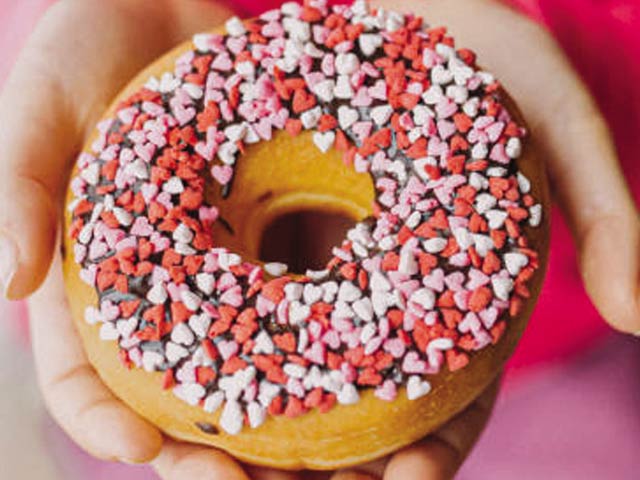Haley O’Neill
Health is called ‘thousand blessings’ and we all want to be healthy. We usually realize this every time we revise our health goals. In such a situation, you also look at your food and drink, but sometimes those plans are derailed by cravings for sugary or carbohydrate-rich foods.
Why do we worry about foods high in sugar and carbohydrates when we’re trying to improve our diet or lose weight? And what can we do about it? There are many reasons behind cravings for certain foods, but here we’re focusing on the four most common reasons.
(1) Severe decrease in blood sugar levels in the body
Sugar is an important source of energy for all animals, including humans, and taste is one of the most important primary sensory experiences. Even without specific sweet taste receptors on the tongue, the characteristic sugar taste can be identified, indicating that it is beyond taste. As soon as sugar enters the human body, the neurons in our intestine are activated. In response to this process, you may increase your appetite or crave more sweets.
Research shows that long-term consumption of sugary foods can affect our mood, digestive system and gut inflammation. Although the response may vary from person to person, regular consumption of sweet or carbohydrate-rich foods can cause symptoms such as a rapid rise in blood sugar levels and a rapid drop in sugar levels.
When blood sugar levels drop, your body naturally craves an immediate source of energy, and in such a situation, your heart may generally crave sugary or carbohydrate-rich foods. Because these two items are quick access to energy.
(2) Decreased dopamine and serotonin
Certain neurotransmitters such as dopamine (hormone) are activated in the pleasure part of the brain. Eating sugary and carbohydrate-rich foods can stimulate the release of dopamine, which can create a pleasurable feeling in the heart and brain. While the feel-good hormone ‘serotonin’ suppresses appetite. Changes in serotonin levels can affect your mood, energy levels in the body, and fluctuating processes in attention.
It is also related to eating carbohydrate-rich foods in the afternoon. A low-carb diet can lower serotonin and lower your mood. However, a recent review found little correlation between these foods and the risk of anxiety and depression.
Women crave more carbohydrate-rich foods than men. Conditions such as irritability, fatigue, depression, and cravings for carbohydrate-rich foods are part of premenstrual symptoms and may be related to decreased serotonin levels.
(3) Deficiency of salts and water in the body
Often times our body craves the things it lacks. such as water or hydration and salt depletion. For example, a low-carbohydrate diet lowers insulin levels and reduces sodium and water retention in the body. Very low carbohydrate diets such as the ketogenic diet produce ‘ketosis’. It is a metabolic or digestive condition in which the body shifts from its normal reliance on carbohydrates to using fat as its primary source of energy.
Ketosis is often associated with increased urine output, which further contributes to potential fluid loss, electrolyte imbalances, and salt cravings.
(4) Tension
Stress, boredom, and emotional upheaval can lead to cravings for comfort food. This is because stress-related hormones can affect our appetite, satiety and food preferences. Stress hormones can lead to cravings, especially for sweet and comfort foods.
A 2001 study of 59 premenopausal women exposed to stress found that stress causes the body to burn more calories. Another recent study found that when chronic stress was combined with a high-calorie diet, food intake and the preference for eating sweets increased.
How can you curb your cravings for sweets and carbohydrates?
Below are four tips to curb your cravings for sugary and carbohydrate-rich foods:
Don’t eliminate an entire food group. Try to eat a well-balanced diet and make sure you’re including enough protein in your meals to help keep you full and reduce cravings for sugary and carbohydrate-rich foods.
Older people should consume between 20 and 40 grams of protein at each meal, with a particular focus on breakfast and lunch, while at least 0.8 grams of protein per kilogram of body weight per day is recommended for muscle health. Quantity should be taken.
Eat foods rich in fiber. These include vegetables and whole grains. They make you feel full and stabilize your blood sugar levels. For example, you can include broccoli, quinoa, brown rice, oats or barley, beans, lentils, and whole grains in your diet.
Instead of high-sugar refined carbohydrates like processed cookies, soda, or baked goods, include whole-grain bread or whole-grain muffins, or nut and seed bars or energy bites made with chia seeds and oats.
Manage the stress level in your body. Stress reduction techniques to control emotional triggers for food cravings include meditation, deep breathing, or practicing yoga.
Practice mindful eating, eating slowly and attuning to body sensations. Get enough sleep. Get at least seven hours of sleep and try to get at least seven to eight hours of quality sleep every night. Lack of sleep can disrupt the hormones that control appetite and food cravings. Take control of your eating. Controlling sugar, salt, and carbohydrate cravings can certainly be a huge challenge when trying to eat healthy or lose weight. Remember, this is a journey that may have setbacks. Don’t lose patience because your success sometimes depends not on your urges but on your ability to control them.
(Thanks to BBC Urdu)
(function(d, s, id){
var js, fjs = d.getElementsByTagName(s)[0];
if (d.getElementById(id)) {return;}
js = d.createElement(s); js.id = id;
js.src = “//connect.facebook.net/en_US/sdk.js#xfbml=1&version=v2.3&appId=770767426360150”;
fjs.parentNode.insertBefore(js, fjs);
}(document, ‘script’, ‘facebook-jssdk’));
(function(d, s, id) {
var js, fjs = d.getElementsByTagName(s)[0];
if (d.getElementById(id)) return;
js = d.createElement(s); js.id = id;
js.src = “//connect.facebook.net/en_GB/sdk.js#xfbml=1&version=v2.7”;
fjs.parentNode.insertBefore(js, fjs);
}(document, ‘script’, ‘facebook-jssdk’));



